 |
 |
 |
| |
In-vitro resistance profile of TMC278, a next-generation NNRTI: evidence of a higher genetic barrier and a more robust resistance profile than first-generation NNRTIs
|
| |
| |
Reported by Jules Levin
18th Intl HIV Drug Resistance Workshop
June 9-12
Ft Myers Florida
AUTHOR CONCLUSIONS
The current in-vitro data demonstrate that TMC278, an inhibitor of HIV-1 RT, is highly potent against wild-type HIV-1 group M.
TMC278 retained activity against samples resistant to NVP and EFV.
TMC278 retained antiviral activity against a number of HIV-1 SDMs containing NNRTI RAMs that emerged after treatment with EFV or NVP
- all SDMs containing one NNRTI RAM were sensitive to TMC278 except for those with K101P, Y181I, and Y181V. These mutations exhibit a low prevalence among NNRTI-resistant samples (<2%)6
- the SDM with the most common NNRTI RAM, K103N, was sensitive to TMC278 and ETR.
The concentration of TMC278 required to prevent HIV-1 breakthrough in vitro was lower than that required by EFV or NVP.
NNRTI RAMs emerging under selective pressure of TMC278 from wild-type HIV-1 included V90I, L100I, K101E, V106A, V106I, V108I, E138G, E138K, E138Q, E138R, V179F, Y181C, Y181I, G190E, H221Y, F227C, M230I, and M230L.
These findings contribute to the understanding of the resistance profile of TMC278. However, resistance analyses from the ongoing Phase III studies are necessary to further define the in-vivo resistance profile of TMC278.
ABSTRACT
Background: TMC278 (rilpivirine), is a next-generation NNRTI currently in Phase III clinical development. TMC278 is active, in vitro, against wild-type and NNRTI-resistant HIV-1 isolates. The in-vitro resistance profile of TMC278 was investigated and compared to that of efavirenz (EFV), etravirine (ETR), and nevirapine (NVP).
Methods: Resistant viruses were selected through in-vitro passage in MT4 cells infected with wild-type HIV-1 or strains harboring mutations associated with resistance to HIV-1 reverse transcriptase (RT) inhibitors. Emerging viruses were phenotyped and genotyped. HIV-1 site-directed mutants (SDMs) and recombinant clinical isolates were generated. Phenotypic susceptibility was determined using the current Antivirogram®-specific biologic cut-offs (BCOs) of 3.3 for EFV, 3.2 for ETR, and 6.0 for NVP. A preliminary BCO of 3.7 was used for TMC278.
Results:
No viral breakthrough was observed in the presence of TMC278 at concentrations where, in comparable experimental settings, EFV and NVP could not suppress viral replication.
NNRTI resistance-associated mutations (RAMs) emerging through in-vitro passage included L100I, K101E, V106I, Y181I, Y181C, and/or M230I.
Furthermore, 22 single, 15 double, and 10 triple HIV-1 SDMs containing the most common NNRTI RAMs were studied.
From these, 80% (12/15) of the single, 40% (6/15) of the double, and 0% of the triple HIV-1 SDMs resistant to EFV or NVP-retained sensitivity to TMC278.
All the HIV-1 SDMs, sensitive to EFV or NVP, were also sensitive to TMC278 and ETR.
Those with the K101P, Y181I, or Y181V mutation had decreased sensitivity to both TMC278 and ETR (fold-change in 50% effective concentration [EC50] value (FC) of 46.5, 14.3, and 12.6 for TMC278, and of 5.6, 11.5, and 17.4 for ETR, respectively).
The HIV-1 SDMs carrying one of the two most prevalent NNRTI RAMs, i.e. K103N and Y181C, retained full sensitivity to TMC278 (FC of 0.8 and 2.6, respectively).
No differences in TMC278 antiviral activity or in the rate of selection of TMC278-resistant strains were observed among HIV-1 group M subtypes.
Conclusions: These in-vitro results suggest that TMC278 is a potent, next-generation NNRTI, with a higher in-vitro genetic barrier and a more robust resistance profile than first-generation NNRTIs.
Please note some of the data in the abstract have been updated in the poster
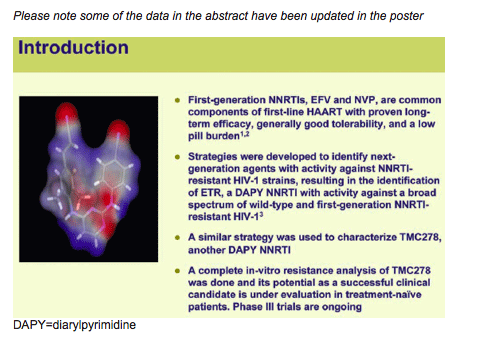
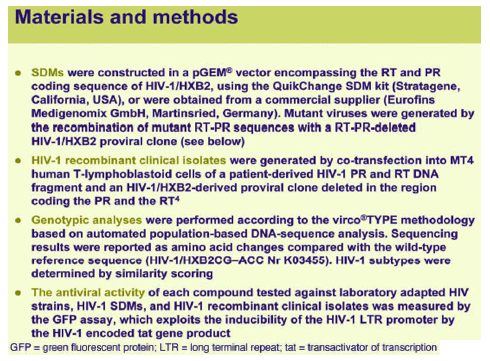
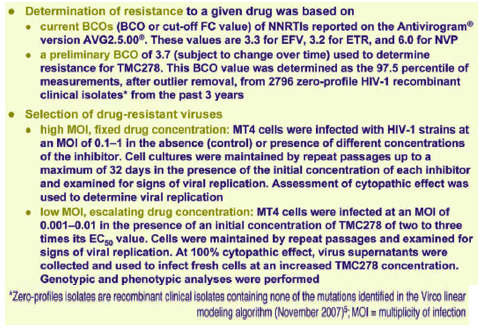
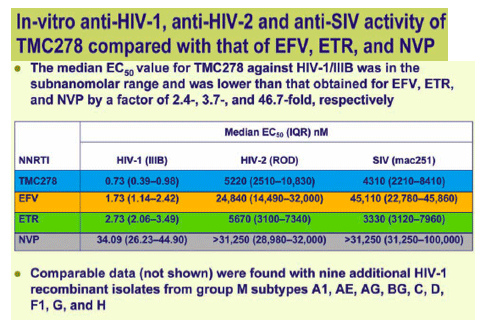
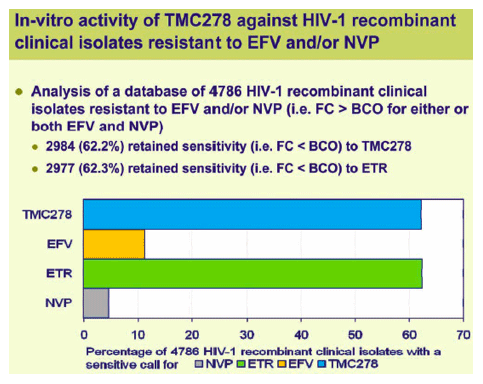
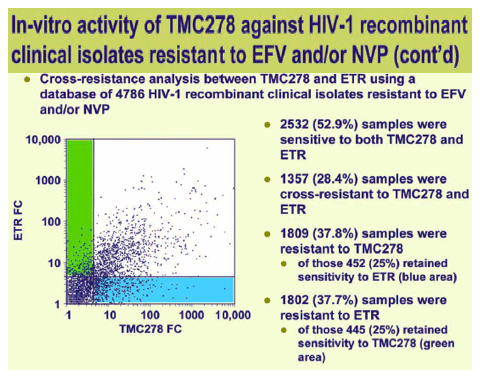
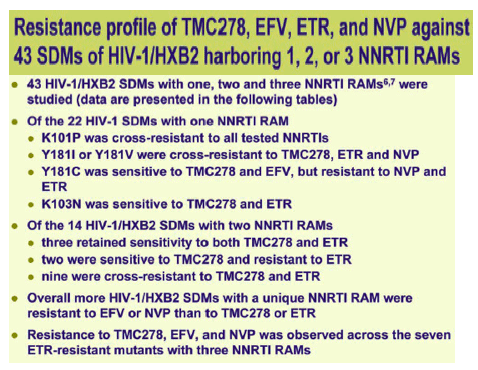
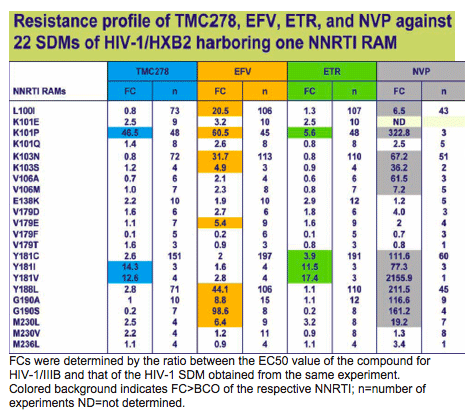
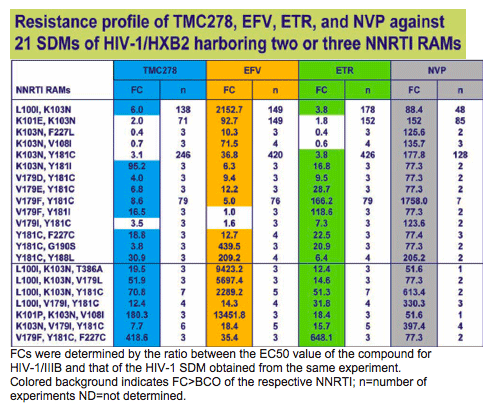
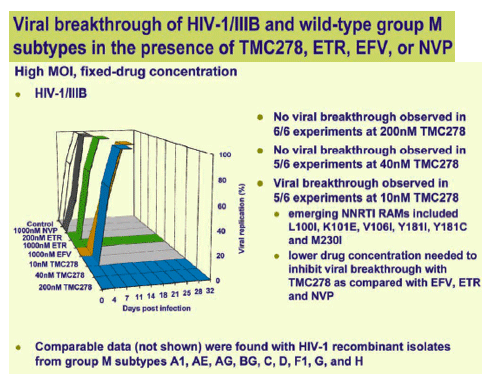
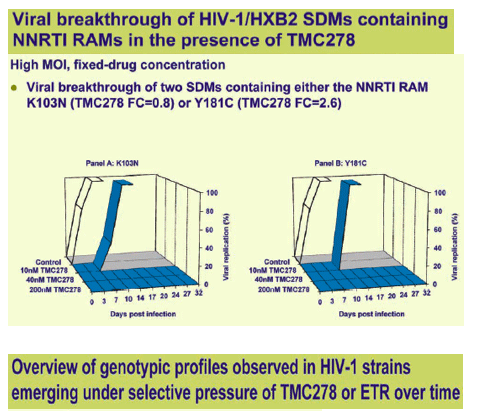
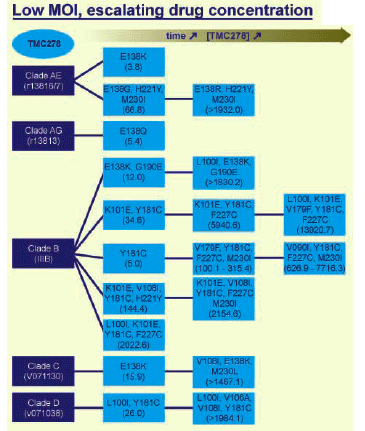
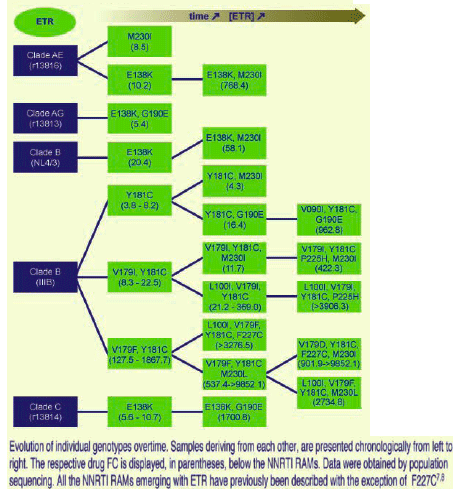
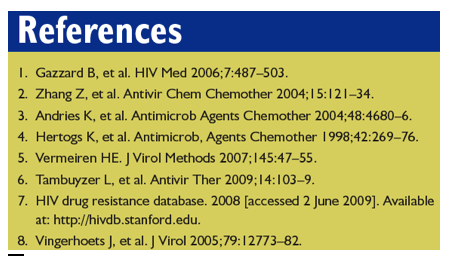
|
| |
|
 |
 |
|
|